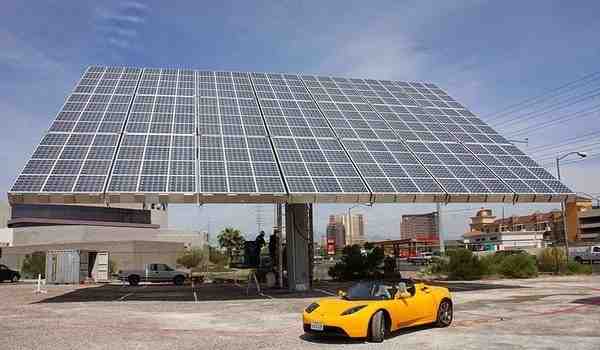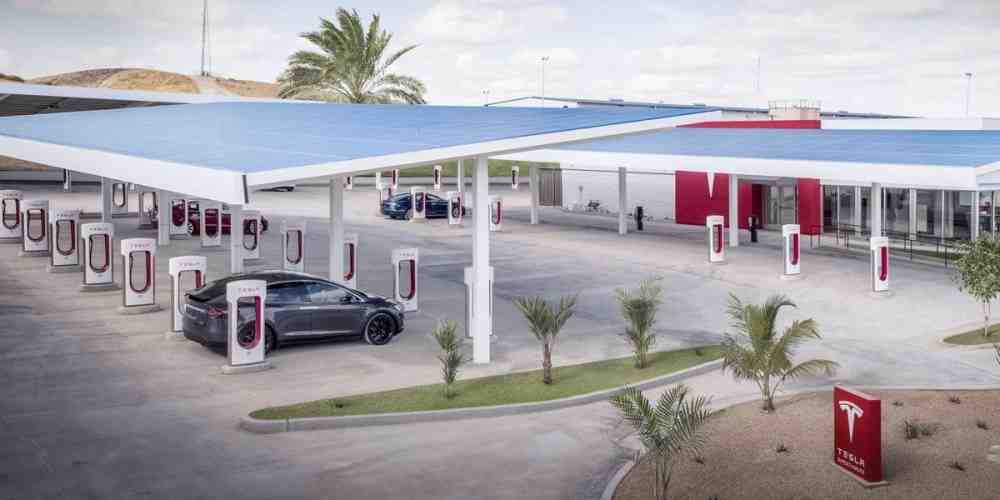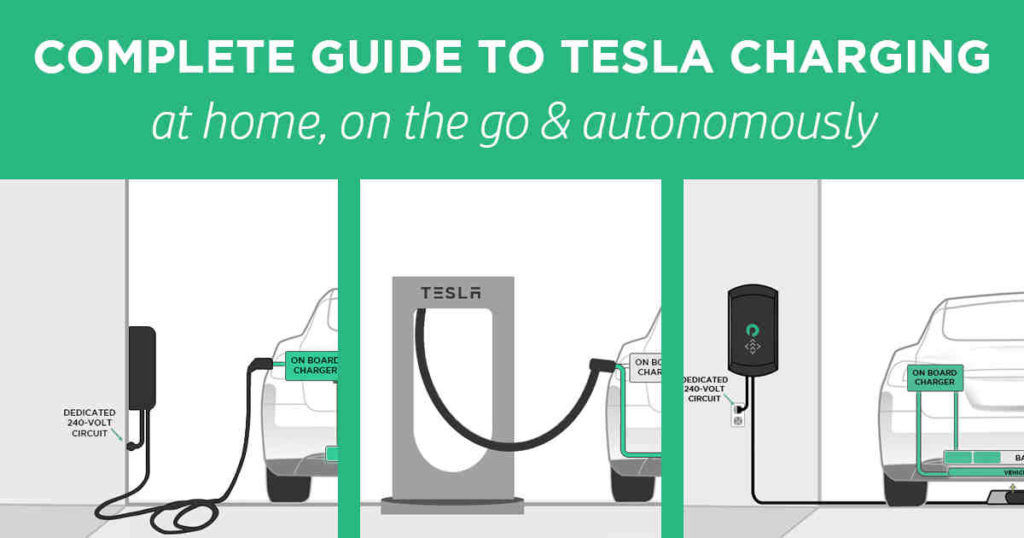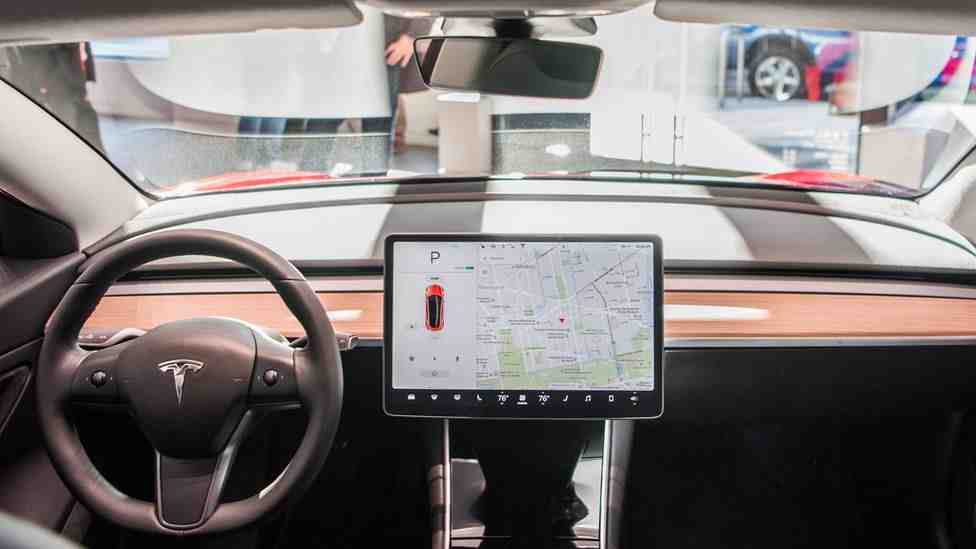The Tesla Model S, on the other hand, has an electric charge cost of $ 0.037 per mile (which is roughly the cost you would pay to charge a Tesla at home), which is $ 555 to drive the same 15,000 miles. So yes, the fuel economy with Tesla is significant.
Is Tesla charging cheaper than gas?

Charging a Tesla costs an average of $ 13.96. Depending on the car model, it costs from $ 9.62 to $ 18.30. Overall, the cost of charging a Tesla is 3. Read also : How long do Tesla cars last?.6 times less per mile than the cost of refueling a gas car (4.56 cents per mile compared to about 16.66 cents per mile for gas vehicles).
How much does it cost to charge a Tesla? If you buy the 2021 Standard Range Model 3, you can expect to pay around $ 7.65 for a full battery charge. This brings the cost per mile to around $ 0.03 or $ 2.91 per 100 miles. It would cost $ 12.54 to fully charge the Long Range and Performance 2021 models.
Is Tesla Supercharger cheaper than gas?
Moderator, Model 3, Tesla Energy Forums Paid $ 50 to recharge – and this comes home with a dead battery (now I have to pay to charge it). Gas was trading at around $ 3 / gallon today, plus or minus a few cents today. The Prius reaches around 45 mpg. To see also : Do Teslas have brakes?. That’s about 15 gallons of gasoline for $ 45.
Is Tesla Supercharger cheaper than home?
In almost all cases, charging a Tesla at home will save you the most money as Superchargers tend to bill at a higher kWh rate than your tool. Depending on the model you have, it will cost anywhere from $ 7.65 to $ 15.29 to fully charge a Tesla at home.
How much does it cost to use a Tesla supercharger?
The average recharge cost of $ 0.25 per KW is also valid for the Model 3. A full charge to about 250 miles of range costs about $ 22.00. More typically, half the payload (150 miles of range) would cost around $ 11.00.
How much did your electric bill go up with a Tesla?
Tesla generally needs around 25 kWh / 100 miles. On the same subject : Can you plug a Tesla into a regular outlet?. So 1,500 miles equals 375 kWh – which adds about $ 45 to your monthly electricity bill.
How much will my power bill go up with a Tesla?
All Tesla products have an average charging cost per mile of 4.56 cents per mile. So, if you only charge Tesla at home, you can expect your electricity bill to increase by around $ 50 each month.
How much electricity does a Tesla Model 3 consume?
How much electricity does the Tesla Model 3 consume? The Tesla Model 3 is shipped with battery packs ranging from 50 kWh (Standard Range) to 82 kWh (Extended Range). It has a range of 220 miles (50 kWh) to 353 miles (82 kWh). This means that the average Tesla Model 3 consumes around 0.34 kWh per mile.
Is it cheaper to charge Tesla at home or at supercharger?
In almost all cases, charging a Tesla at home will save you the most money as Superchargers tend to bill at a higher kWh rate than your tool. Depending on the model you have, it will cost anywhere from $ 7.65 to $ 15.29 to fully charge a Tesla at home.
Is Tesla free supercharging worth it?
The Tesla Supercharger Network Free Top Up is one of Tesla’s most famous early benefits, and the transferable Free Unlimited Top Up is a great selling point when you’re ready to launch your Tesla to market (and a really fantastic financial promotion you can take advantage of if You want to buy).
Is it cheaper to charge at home or at a supercharger?
Is it cheaper to charge with a Supercharger or charge at home? In almost all cases, charging a Tesla at home will save you the most money as Superchargers tend to bill at a higher kWh rate than your tool.
Is opening EV charging station profitable?

According to an EV reporter, with 8 hours of use per day and a profit margin of Rs 3.5 per unit of electricity, the operator can recover equipment costs within 7 years. With 16 hours of use, RoI can be achieved in the fourth year.
Are electric vehicle charging stations a good investment? The Data Bridge market study predicts that the global car charging station investment market will grow by 48% from 2019 to 2026. enough equipment to charge electric vehicles.
Can I make money with ChargePoint?
Cloud service subscriptions. Another way to make money through ChargePoint is to sell a variety of cloud-based subscriptions to commercial and fleet customers. Features include: Ability to set the price the driver pays at the station.
Is ChargePoint a good investment?
In short, if you’re looking to invest in an electric vehicle charging company, the ChargePoint looks better. ChargePoint stock looks well placed to generate returns in the marketplace. If the company manages to implement its plans, its shares may also turn out to be a multibagger in the long run.
Do electric charging stations make money?
Reuters reports that electric vehicle charging has taken losses for BP and its rivals so far. BP does not expect its charging division to make a profit before 2025. However, in terms of margins, BP’s fast charging stations are approaching the same margins the company is making on pumping gasoline.
How fast does a Tesla charge on 220v?

For most Tesla, it only takes about an hour to charge from 40% to 80% on a 220V system, but another two hours to go from 80% to 100%.
How long does it take to charge a Tesla with a 240V socket? Here are the estimated times to fully charge your Tesla: Level 1 (120V): 20 to 40 hours. Level 2 (240 V): 8 to 12 hours. Level 3 (480V): 15 to 25 minutes.
Is it better to charge a Tesla on 110v or 220V?
Charging 220V is more efficient (less energy wasted) so it will come out cheaper.
What is the best voltage to charge Tesla?
You can order a wall connector online and have it installed by a Tesla certified electrician. If you don’t want to install a wall connector, you can purchase a mobile connector and plug it into a standard 120 volt three-pin outlet. The 120 volt outlet provides a range of 2 to 3 miles per hour of charging.
Do you need 110 or 220 to charge Tesla?
Tesla provides a list of recommended electricians in your area who can provide you with a quote. Can a normal 120V socket be used for charging? You can use a NEMA 5-15 adapter for a 120V outlet. This gives you about two to four miles of range per hour of charge, depending on your car.
How fast does a Tesla charge on 240V?
It’s a 240V outlet on a 50 AMP switch. This will charge the Tesla Model 3 at approximately 30mph. If you already have a 240V plug installed nearby, Tesla offers adapters for most sockets. The fastest and easiest way to charge a Tesla at home is to use the Tesla Wall Connector.
Can Tesla charge on 240V?
The recommended home charging installation option for Tesla vehicles is a 240V NEMA 14-50 outlet. This socket is commonly used for electric cookers and recreational vehicles. Installed with a 50 A switch, this socket allows a charging speed of approximately 37 kilometers per hour.
How long does it take to charge a Tesla with 240V?
It takes about 10 hours to fully charge a Tesla with NEMA 14-50 plugs when using a 240 volt outlet. Wall connectors are used to charge cars at home. The most popular supercharger is the supercharger V2.
Can you charge a Tesla with a 220V outlet?
Can I charge my EV with 220V?
If you receive an adapter, you can turn your 220V dryer sockets into an electric vehicle charging station in your own home. It is convenient for charging at night. This type of charging can extend the range up to 60mph of charging time, depending on the battery and vehicle.
Can I plug my Tesla into a 220V outlet?
The recommended home charging installation option for Tesla vehicles is a 240V NEMA 14-50 outlet.
How long will a Tesla battery last?

According to Elon Musk on Twitter, Tesla’s car batteries are technically expected to run from 300,000 to 500,000 miles, which is 1,500 battery cycles. That’s 22 to 37 years for the average car driver who drives about 13,500 miles a year, according to the Department of Transportation.
How much does it cost to replace a Tesla battery? How much does it cost to replace a Tesla battery? The cost of replacing a Tesla battery varies with the labor and parts needed. Typically, the most basic Tesla battery replacement costs between $ 13,000 and $ 14,000. In the premium Model S limousine, a Tesla battery replacement costs between $ 13,000 and $ 20,000.
Why do Tesla owners tap the charger?

I recently watched a few Tesla videos on Tiktok and found that many Tesla owners touch their Tesla’s taillight 4 to 5 times before charging. Why are they doing this? Quite simply – this is one way to open the charging port door. It is tucked behind a panel that looks like part of the driver’s rear side light.
How much does it cost to fully charge a Tesla at the charging station? The average recharge cost of $ 0.25 per KW is also valid for the Model 3. A full charge to about 250 miles of range costs about $ 22.00. More typically, half the payload (150 miles of range) would cost around $ 11.00. Cost varies depending on the region of the country and local electricity rates.
How long does it take to charge a Tesla at a charging station?
How long does it take to charge a Tesla with a charging station? The superchargers can charge the vehicle’s battery to 80% in just about 40 minutes. When the battery reaches 80%, it will start to charge more slowly to protect its health until it is fully charged.
Is it free to charge a Tesla at a charging station?
Now, new Tesla vehicles have to pay by kWh or per minute at Supercharger stations. Tesla vehicles that have been sold with “free recharge for life” still do not have to pay anything for online charging.
How long does it take to charge a Tesla at public charging station?
Charging a Tesla can take anywhere from an hour to 12 hours. Tesla charging time depends on how charged your car’s battery is and the type of charging station you are using.
How far can a Tesla go fully charged?
As previously mentioned, the battery in any Tesla car will last for at least 267 miles on a single charge. Various factors determine the range of a battery. Here’s how you drive and what the size of the battery is. The most extended range Tesla currently offers is around 375 miles on a full charge.
How far can a Tesla go with 100% battery?
As mentioned, with any Tesla car, the battery will last for at least 267 miles on a single charge. The range depends on how you ride and how big your battery is. Currently, the longest range that Tesla offers is around 375 miles of range when fully charged.
How far can a Tesla go on one charge at 70 mph?
| Category | Range test |
|---|---|
| Physique | Sedan |
Can I plug Tesla into regular outlet?
Technically speaking, you can connect your Tesla to a standard 110V socket using the free adapter that came with the car. But you can only charge slowly – with around 3 miles of range per hour of standby. It’s almost as practical as refilling your car’s fuel tank with a dropper.
How long does it take to charge Tesla from a 120V socket? Here is a breakdown of the charging methods and an approximate amount of time to fully charge a Tesla from a low battery level: Level 1 AC (120V socket at home): 20-40 hours. AC Level 2 (Third Party Chargers / Tesla Chargers / Tesla Home Charger): 8-12 hours. Level 3 DCFC (Tesla Supercharged): 15-25 minutes.
Can you plug a Tesla into any charger?
Every on-road electric vehicle is now compatible with the standard US Tier 2 chargers, known in the industry as SAE J1772. This includes Tesla vehicles that are shipped with the brand’s patented Supercharger connector.
Can you charge a Tesla with a non Tesla charger?
Can you plug a Tesla into a regular power outlet?
Technically speaking, you can connect your Tesla to a standard 110V socket using the free adapter that came with the car. But you can only charge slowly – at around 5km per hour of standstill. It’s almost as practical as refilling your car’s fuel tank with a dropper.
Can you plug a Tesla into a 120V outlet?
After all, every Tesla owner gets a 110/120 V home power supply with their vehicle and home sockets, well they come with your home. This means you can easily charge your Tesla Model 3 from a standard 120V household outlet with a trickle charge adapter.
Can you charge a Tesla with a 120V outlet?
Tesla owners can actually charge from a standard 120V household outlet with a trickle charge adapter. This is called trickle loading because it’s really, very slow. No upfront costs. The new Tesla owner receives a 110/120 V power supply to plug into a regular household outlet at no extra charge.
Do Teslas have a 110v outlet?
Not. It’s called V2G, and Tesla doesn’t have or support any AC output. Only the same car output as 12V DC can be used (low current when inverted to 120V AC) (cigarette lighter plug or USB 2.
What kind of outlet is needed for a Tesla?
The recommended home charging installation option for Tesla vehicles is a 240V NEMA 14-50 outlet. This socket is commonly used for electric cookers and recreational vehicles. Installed with a 50 A switch, this socket allows a charging speed of approximately 37 kilometers per hour.
Does Tesla have charging ports?
You can order a wall connector online and have it installed by a Tesla certified electrician. If you don’t want to install a wall connector, you can purchase a mobile connector and plug it into a standard 120V three-pin outlet. A 120V outlet will provide a range of 2 to 3 miles per hour of charging.
Can I plug a Tesla into a regular outlet?
Technically speaking, you can connect your Tesla to a standard 110V socket using the free adapter that came with the car. But you can only charge slowly – at around 5km per hour of standstill. It’s almost as practical as refilling your car’s fuel tank with a dropper.
Sources :


